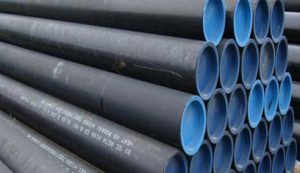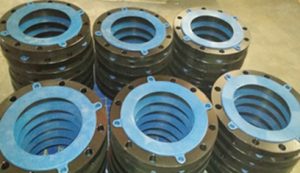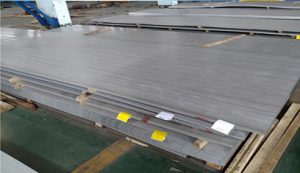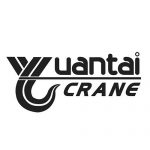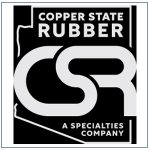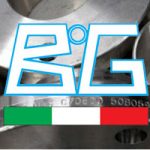
LABORATORY TOTAL SULPHUR ANALYSER
FOR GASEOUS AND LIQUID SAMPLES
OPERATING PRINCIPLE
The sample is precisely metered in a continuous flowing stream of hydrogen. Both sample and hydrogen are heated together in a furnace at a temperature between 650°C and 1200°C (depending on the sample composition) where hydrogasification and catalytic hydrogenation transform sulphur compounds into H2S and reaction gas product.
For heavy or unsaturated hydrocarbons, the furnace includes a propriety catalytic element to achieve 100% conversion and prevents the reaction tube from clogging, fouling, and carbon build-up.
The resulting H2S is monitored by the interference-free, lead acetate tape, detection technology coupled with microprocessor-based electronics to provide fast and accurate measurement of total sulfur in liquid, gaseous, and LPG laboratory applications.
The analyser is sensitive to extremely low total sulphur concentrations (less than 10 PPB) as well as to high concentrations (up to 2000 PPM).
OPTIONS
Motorized syringe drive Model for liquid/gas sample injection.
Patented catalytic element for heavy or unsaturated hydrocarbon applications.
Gas / Liquid syringes
| STANDARD SPECIFICATIONS | |
| – Principle | Conversion of sulfur compounds in Hydrogen sulfide (reduction in the presence of Hydrogen) and detection of the resulting H2S by colorimetry (speed of coloration of a lead acetate impregnated tape). |
| – Applications | – Gaseous Hydrocarbons – Liquid Hydrocarbons up to C25. |
| – Detector | Single photodetector acting as measure and reference. |
| – Measuring method | ASTM D 4468 for gases, D 4045 for liquids. |
| – Rangeability | 0-20 PPB up to 0-2000 PPM (with several different calibrations to be done by client). |
| – Range unit | PPB, PPM, mg/Nm3, selectable. |
| – Lowest detectable limit | Between 5 and 50 PPB, depending on the application. |
| – Linearity | ± 0,5% of the calibration full scale. |
| – Reproducibility | ± 1% of calibration full scale. |
| – Accuracy | ± 1% of calibration full scale. |
| – Response time | Typically 9 min. for low range and 3 min. for high range. |
| – Zero drift | None due to the single photo-detector technique. |
| – Power supply | 110/220 V – 50/60 Hz – +/- 10 %. |
| – Power consumption | 1000 VA. |
| – RFI protection | IEC 8013 level 3 (CE Mark). |
| – Analog output | Option 4-20 mA isolated, 600 ohms max, loop load. |
| – Digital output | Options up to 8 relays Modbus TCPIp and RS 485. |
| – Communication | Modbus TCPIp and RS 485, embedded server |
| – Calibration libraries | Included, calibrations to be made by the client. The instrument is calibrated only up to 4 different ranges. |
| – Conversion furnace | Filament coil up to 1200°C. |
| – Reaction tube | Quartz up to 1100°C / Ceramic above 1100°C. |
| – Type of conversion | Pyrolysis or catalytic depending on the application (catalytic element optional). |
| – Conversion furnace temperature. | Adjustable between 600 and 1200°C. |
| – Sensing tape | Lead acetate impregnated, 60 meters roll. |
| – Tape life | Between 30 and 90 days (adjustable) in continuous operation. |
| – Storage life | 5 years for the sensing tape. |
| – Humidifier | 5 % acetic acid in distilled water 5 to 15 cc per week consumption. |
| – Sample inlet pressure(gas) | 7 bar max. |
| – Sample flowrate (gas) | 2 up to 200 cc/min adjustable (depending on the range). |
| – Liquid sample injection | With motorized syringe drive (optional). |
| – Hydrogen inlet pressure | 7 bar max. |
| – Hydrogen flowrate | 200 up to 500 cc/min adjustable. Sulfur free. |
| – Nitrogen inlet pressure | 7 bar max. |
| – Nitrogen flowrate | 200 cc/min during the regeneration cycle only industrial grade. |
| – Instrument Air inlet pressure | 7 bar max. |
| – Instrument Air flowrate | 200 cc/min during the regeneration cycle only. |
| – Manual Regeneration system | In case of excess samples without H2 in the furnace, carbon build-up appears in the reaction tube affecting the accuracy of the analysis. |
| – Working temperature | 20°C +/- 2°C. |
| – Storage temperature lab | -15°C up to 55°C – 95 % R.H. |
| – Required bench sizes | L1500 x D700 mm. |
| – Total weight | 60 kg without options. |







